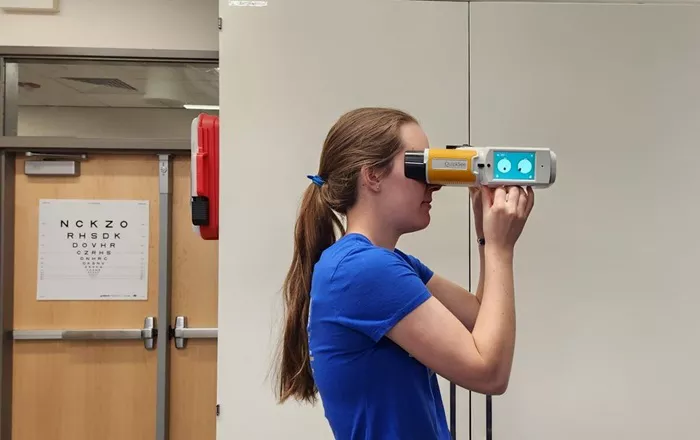A groundbreaking study led by Northwestern Medicine and published in the Journal of Imaging sheds new light on how long COVID impacts the body, using eye health as a key indicator. The research, conducted on non-hospitalized long COVID patients from the Northwestern Medicine Neuro COVID-19 Clinic, explores the changes in the retina and could help doctors diagnose, track, and potentially uncover the underlying causes of the condition.
The study used advanced retinal imaging techniques to examine the eyes of long COVID patients, revealing a significant reduction in the density of blood vessels in the retina compared to healthy individuals. According to Dr. Manjot K. Gill, senior author of the study and lead ophthalmologist at the Northwestern Medicine Comprehensive COVID-19 Center, this finding bridges the fields of ophthalmology, neurology, and COVID-19 research. It supports the hypothesis that similar blood vessel changes could occur in other organs, such as the brain, potentially contributing to symptoms like memory loss, brain fog, and fatigue that are commonly associated with long COVID.
The most notable change observed in the eyes of long COVID patients was a reduction in blood flow within the smallest blood vessels of the retina’s deeper layers. Researchers suggest that this decrease in circulation may mirror similar reductions in blood flow to the brain, which could be linked to neurological symptoms commonly reported by long COVID sufferers.
Oculomics, a growing field that examines how eye health relates to systemic diseases, offers new insights into how conditions like diabetes, cardiovascular diseases, and neurodegenerative disorders can be detected through the eyes. Dr. Gill highlighted the potential of retinal imaging to serve as a valuable diagnostic tool, noting, “Retinal imaging allows us to see blood vessels that we cannot easily image elsewhere. In this context, the eyes really are the ‘window to the soul.’”
Building on these findings, researchers are initiating a longitudinal study to explore how changes in the retinal blood vessels correlate with the symptoms of long COVID and other markers of the condition. This study aims to determine whether retinal imaging could become an essential tool for diagnosing, managing, and predicting the progression of long COVID.
The impact of long COVID remains a significant issue. Despite a reduction in the immediate threat of the COVID-19 pandemic, about one-third of survivors continue to experience lingering effects, affecting an estimated 17 million adults in the U.S. The condition places a heavy strain on healthcare systems and has led to substantial economic losses, including approximately $600 million in lost wages. Dr. Igor Koralnik, Chief of Neuroinfectious Diseases at Northwestern Medicine, emphasized the urgency of advancing research in this area. “By studying the effects of COVID-19 on the body, we can improve diagnosis, management, and support for those affected.”
Related topic:
Myopia Surge: Early Detection and Treatment Key to Preventing Vision Loss
Shraddha Eye Care Trust Launches Ophthalmic Wing at Sunday Village Clinic
10 Eye Exercises and Habits to Boost Vision Health

